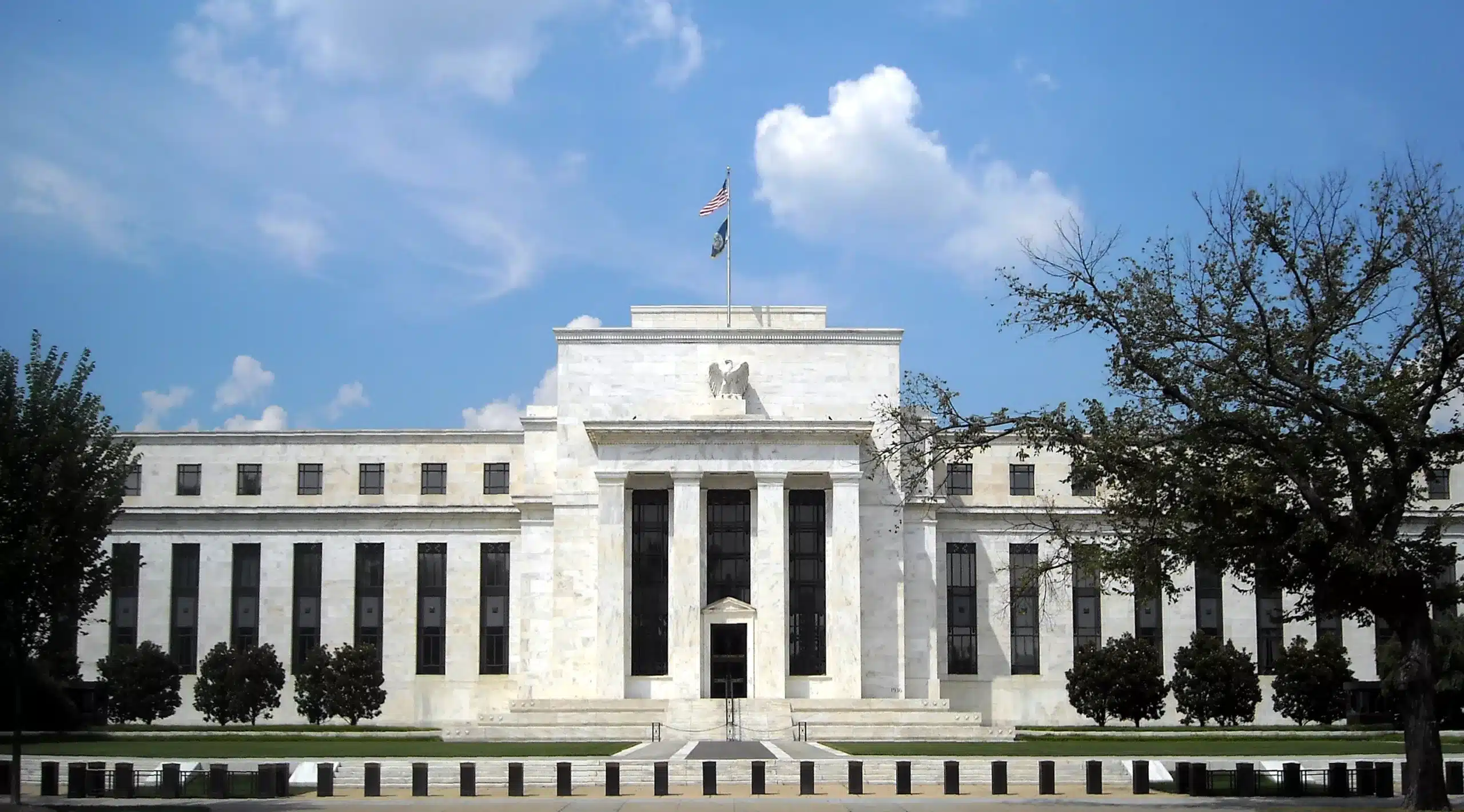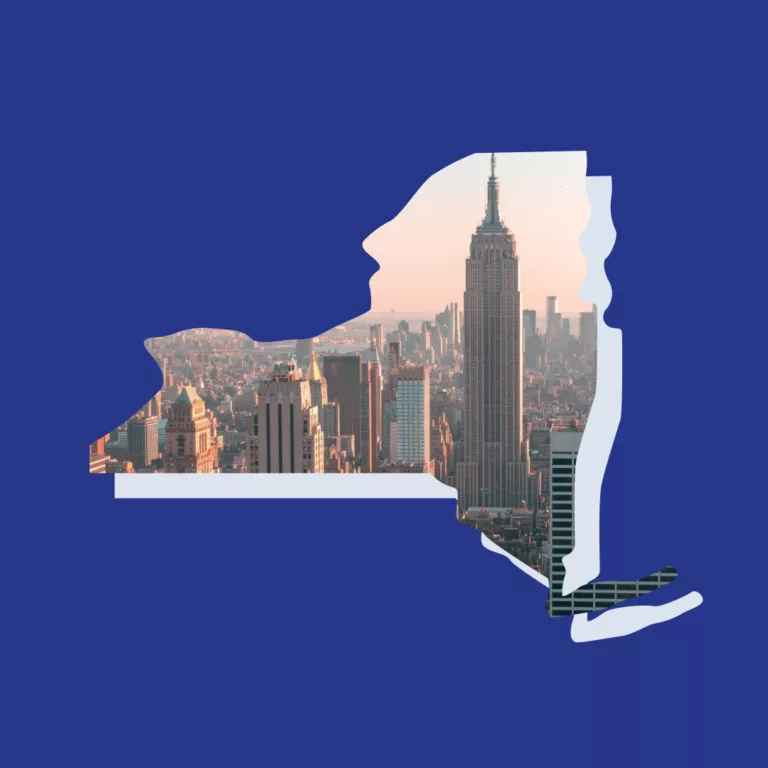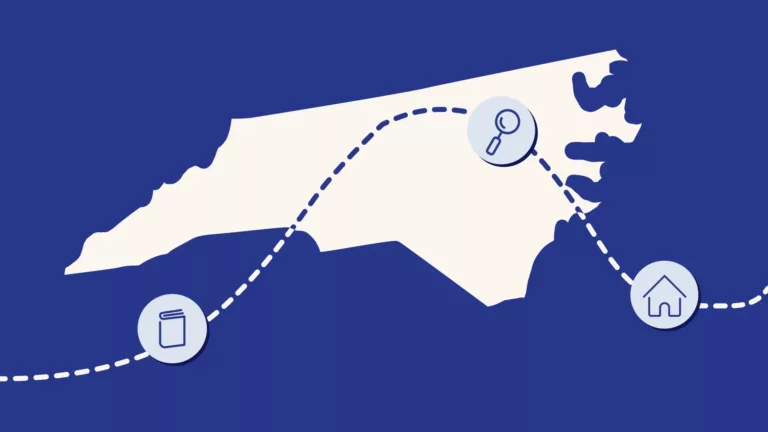If you’re a person who is a little fuzzy on what the Fed is or what it does, you’re not alone. But with interest rates rising this year, now’s a pretty good time to catch up.
So, what is the Federal Reserve? What do they do? And what exactly does a potential rate increase mean for the average American family?
A quick note: we heart this stuff, but it’s about to get extra nerdy around here. If at any point this is too much banking information for you, feel free to skim just the bold parts. Or skip right to the What does all this mean for me? section at the bottom. You won’t hurt our feelings, and we won’t tell your high school economics teacher. We promise.
- What is the Fed?
- A Few Notes About Inflation
- What is the Federal Funds Rate?
- How Does the Federal Funds Rate Relate to Other Interest Rates?
- If the Federal Funds Rate Goes Up, Does that Mean Mortgage Rates Will Go Up, Too?
- Anything Else I Should Worry About When the Fed Raises Interest Rates?
- Got All That?
- What Does All This Mean for Me?
What is the Fed?
The Federal Reserve System—usually referred to as the Federal Reserve, or sometimes just the Fed—is America’s central bank.
You can think of the central bank as a bank for banks. While you and I can’t open an account or make a deposit at any of the twelve regional Federal Reserve banks, the banking institution where you park your checking and savings accounts definitely has your closest Federal Reserve branch on speed dial.
The Federal Reserve supervises and regulates America’s banking industry and provides some services to financial institutions. (More on those regulations and services in a moment.) But the Federal Reserve’s main objective is setting and enacting American monetary policy.
Monetary policy sounds fancy and complicated, and it is. But basically, monetary policy is a set of actions and guidelines designed to influence how much money is at play in the economy.
A Few Notes About Inflation
When money is cheap and widely available, more people are able and willing to borrow money to make things happen—things like building businesses or purchasing homes.
But if there’s too much money available, inflation creeps in. Too many dollars chasing too few goods and services pushes prices up. Inflation depresses economic activity generally. And inflation hurts working people whose wages aren’t keeping up with price increases in particular.
By Congressional mandate, the Federal Reserve’s job is to keep inflation in check and unemployment down.
What is the Federal Funds Rate?
One way the Fed influences the price and availability of US dollars is by setting the Federal Funds Rate, which acts as a baseline interest rate for the entire banking and financial sector.
When you deposit money in a bank, the bank doesn’t actually lock your money up in a vault.
The bank takes your money, and lends out a certain percentage of that money to another bank customer. That borrower uses the money and repays the loan, with interest, over time.
The system works because as a depositor, you trust that you can get your money back from the bank when you need it. But since most folks don’t need most of their money most of the time, the bank only needs to have a fraction of the funds on its books available for immediate withdrawal.
The minimum amount the bank is required to have on hand at any given time is set by the Federal Reserve. At the end of any business day, if one bank is short on cash reserves and another has some extra, the flush bank can loan money, overnight, to the cash-strapped bank, in order to meet its reserve requirements.
The interest rate banks charge other banks for overnight loans of funds needed to meet reserve requirements is the Federal Funds Rate. When people talk about the Fed raising or lowering interest rates, that’s the interest rate they’re referring to.
(Banks can also borrow money overnight from the Federal Reserve, which acts as a lender of last resort. Though that interest rate at the Federal Reserve’s ‘discount window’ is usually a little higher than the federal funds rate, which means it costs more than borrowing from a fellow bank. Practically speaking, borrowing directly from the Federal Reserve only happens in emergencies.)
How Does the Federal Funds Rate Relate to Other Interest Rates?
As a consumer, you can think of the Federal Funds Rate as the lowest possible, rock-bottom interest rate in the entire financial sector.
Banks are heavily regulated, and banks know that other banks are also heavily regulated. The chance that a bank will be unable to repay an overnight loan is almost zero. Being without a certain amount of cash overnight is a minimal inconvenience to a bank. (Provided the bank doesn’t need the money to meet reserve requirements itself, of course.)
The interest rate charged on that bank-to-bank loan represents the least risky and lowest hassle loan a bank could make.
Since loans to individuals and businesses involve more risk and longer timelines, financial institutions charge more for those loans. When the Federal Funds Rate goes up, the interest rates on all the other loans a financial institution makes go up as well.
If the Federal Funds Rate Goes Up, Does that Mean Mortgage Rates Will Go Up, Too?
The short answer? Yes. But probably not right away.
When the Federal Reserve sets interest rates, it has a huge effect on the US economy. And that means financial analysts, bankers, investors, and pretty much anyone who has or is managing serious cash pays a lot of attention to what the Federal Reserve is doing or may be thinking at any given moment.
The central bankers at the Federal Reserve know they’re being watched. They also know that surprises aren’t great for keeping the economy steady. Unexpected things happen from time to time, of course. But generally, the Fed is pretty good about letting folks know what they’re thinking about doing before they actually do it.
And that means when the Fed does raise interest rates, banks and other financial institutions are usually prepared. If the analysts and economists who work for the banks have done their job correctly, any expected rate increases from the Fed should be built into the financial institution’s own internal models already.
As long as there aren’t any surprise rate increases, and as long as the increase is in the range the financial analysts anticipated, would-be homebuyers shouldn’t see a spike in mortgage interest rates the day of a Federal Funds Rate increase.
That said, as the Federal Funds Rate goes up, interest rates for mortgages go up, too. So while it’s usually not a sudden jump, a gradual increase in mortgage interest rates should follow an increase the Fed’s interest rate.
Anything Else I Should Worry About When the Fed Raises Interest Rates?
Yes, actually: your credit cards.
If you double-check the terms on your credit cards, you’ll likely see that the interest rate you’re being charged is variable. And it’s probably tied to the Prime Rate. (The Prime Rate is essentially the interest rate banks are willing to charge their very best customers. It’s more than the Federal Funds interest rate they charge other banks for overnight loans. But, it’s generally benchmarked to that rate.)
In the fine print, the interest rate on your credit card is probably expressed as something like Prime Rate + 14%, currently 18.25%. When the Fed raises interest rates, the Prime Rate goes up almost immediately. So if you carry a credit card balance, you could wind up owing more in interest pretty soon after the Fed raises rates. Consider that one more reason to pay down balances now, while interest rates are still pretty low.
Got All That?
In summary, the Federal Reserve’s influence on interest rates impacts all of us. But incremental changes to interest rates shouldn’t be a cause for panic.
What Does All This Mean for Me?
- If you’ve been on the fence about getting that mortgage, now is probably a good time to go for it. Rates are almost certainly going to go up in the not-so-distant future. While an expected rate hike won’t immediately increase mortgage rates, they’ll climb upwards as other interest rates increase.
- Carrying credit card balances gets more expensive as the Fed raises interest rates. When rates rise, carrying a balance costs you more. If you can, pay those balances down now before rates go up.






